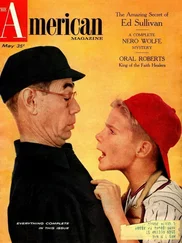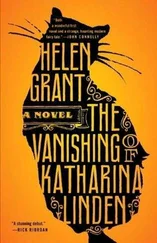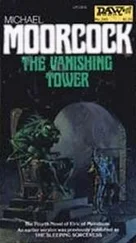* * *
Yet still I couldn’t shake off my fear. Mothers love daughters – but do daughters love mothers? My mother and I were never close. I have always dreaded the day, which seemed to me inevitable, when the world would somehow force the truth about your father upon you. I knew I didn’t deserve you. The longer I kept all this from you, the more convinced I was of it.
Since I began this account, without quite admitting it to myself, I have been reducing my rations. I have had this tendency throughout my life; the greater the store of tins under my stairs, the less I can bring myself to eat. I’ve never given this cycle much thought, but I notice now that the details which cause the nausea to rise in me are to do with shame. The endless self-deceptions that I’ve been acting and re-enacting all these years – it’s reminders of these that make me long for the acid rush in my throat, the clean, scoured emptiness afterwards.
At first the lies were such well-intentioned, small sprouts, necessary for the cause, but over the years they grew up into forests, blocking out the light. Since Paul died things have looked pretty dark.
And yet I write these words, in fact I’ve written the last chapter, in your sitting room, after I fell and injured myself in my kitchen. I lay there unconscious for some hours, apparently, before you found me and called an ambulance. For some reason, when I came round in hospital I did not wake up woozily but was alert the moment I opened my eyes. You were sitting by my bed and I watched your worried face for perhaps a full minute. Then you looked around and noticed that my eyes were open. I watched as your dear face lit up, tears in your eyes. ‘Mama . . .’
It struck me then that, at the very least, I owe you the respect not to pre-judge you. Otherwise how can history fail to repeat itself? Paul had been trying to convince me of this for years, but I suppose I needed to find my own way to the realisation. This account is, on a minuscule scale, my plan for a better future for us both. You still have to read these pages. I dread how they might hurt you. Yet I turn them over to you now in the certainty of your open heart and your powerful, generous imagination – the legacies of both your fathers – and in the hope, one day, of your understanding.
And so, at last, to the reappearance of the Vanishing Futurist.
With each year that passed, Nikita Slavkin became more celebrated. His scientific achievements were recognised in several ways: he was named a ‘Hero of the Soviet Union’ for his contributions to science in several areas including particle physics, and in the 1950s his pioneering experiments with iridium electroplating led to its use in the Soviet rocketry programme.
His fame, however, bore little relation to his work. In November 1919 Lenin sealed his status as a Soviet icon by mentioning him in his speech on the Second Anniversary of the Revolution as ‘Nikita Slavkin… known as the Vanishing Futurist… To labour unstintingly, to seek knowledge, and to give one’s life for science – this is a true Revolutionary hero,’ Lenin declared. The following year the first, short book appeared about Slavkin’s life. In Moscow in 1924 one of the floats in the May Day procession was dedicated to his memory, consisting of a large silver pod in which an unconscious Slavkin lay in a tangle of wires attached to outsize clocks and a huge dial marked ‘To Communism!’ When the arrow reached its Communist zenith, a bell rang and Slavkin leapt to his feet and performed a series of acrobatics. As the arrow ticked around to the beginning, he flopped back down again.
From 1928 and through the 1930s, the depiction of Slavkin moved away from a prone body to a more dynamic image. ‘Nikita Slavkin Breaking the Boundaries of Human Knowledge’ appeared in several further Soviet anniversaries. It showed Slavkin as a beefy fellow in white overalls slamming his fist through the outstretched page of a huge book. Soviet boys took this image to heart and came in their thousands to dressing-up days at school as little musclemen. I could imagine the scenes in the playground as they gave the boundaries of human knowledge what they deserved. ‘Take that! Hurr!’
Further books and a feature-length film ( The Vanishing Futurist , 1952) came out, and several physics departments were named in his honour. A street and a monument were dedicated to him in Sverdlovsk (formerly Ekaterinburg), where he went to school, and a plaque was put up on the house on Gagarinsky Lane. Yet no one has ever managed to replicate his experiment with the Socialisation Capsule, and fifty years of advances in quantum physics cannot explain how his machine could have resulted in his disappearance.
During Khrushchev’s time in power, when so many injustices came to light, Pasha told me he wanted to try to discover the truth about Nikita’s – about your father’s – death. I was still reluctant; we argued over it, and Pasha didn’t bring the subject up again. When you first brought these boxes of papers down from the attic, however, I opened them to find an envelope with a Russian postmark that I’d never seen before. Inside it was a printed slip in Russian: ‘In response to your request.’ Pasha obviously wrote for information despite my resistance, and then left the results for me. He knew that when I looked through the IRT papers again – when I was ready to tell you this story – I would find it. It was a last act of love for you, Sophy, as well as for his friend.
The printed slip had a header, blurrily stamped in the pale green favoured by Soviet bureaucracy, which announced it originated in the Ministry of Internal Affairs of the USSR. Behind it was a photograph of some kind of form. My heart was racing horribly. Half of me wanted to put the envelope back in the box and pretend I had never seen it. It was hard to decipher; the photograph was not entirely clear, the Russian cursive script was typically fluid, one letter running on to the next with little attempt at legibility. Stamped in large red letters over the form were the words: ‘Restricted Information’.
Beneath them I read:
Certificate of Death
SLAVKIN, Nikolai Gavrilovich
Age : 25 years
Died : 15 February 1919
Place of death : Moscow, Kolomenskoye Barracks, Southern Region (formerly the Church of Ascension)
Cause of death : Shot to the head
This information is registered on 18 March 1919, at the Registration Bureau of the Emergency Commission (the Cheka)
* * *
Earlier on in this account, I suggested that the real cause for astonishment did not lie in the failures of the IRT, but in the extent of our success. Some may wonder which success I am referring to. It is true that in material terms one would be hard pressed to point to any evidence of transformation. Our commune was split apart by jealousy and self-interest, while all around us Russia’s experiment with social justice became a vast agar plate for the cultivation of corruption and cynicism.
In the years since, an abyss has opened up between the left and the right, millions of lives have vanished into it, and the ideals behind our Revolution have been swamped by tragedy. As the 1960s recede and the cynical 1970s wear on, the demands of the market are the only signposts through the modern desert. On the right wing they dismiss social justice as facile and dangerous, while on the left, loyal Socialists – like myself for many years – believe they support the cause by closing their eyes to the reality of the Soviet Union, by blaming Stalin, or Lenin’s illness, or ‘errors’. Yet the truth is that in January 1919 Nikita Slavkin died of a bullet to the head in the filthy backyard of a lunatic asylum.
Читать дальше





![Майкл Муркок - Спящая волшебница / The Sleeping Sorceress [= Участь Белого Волка, Рыцарь Хаоса, The Vanishing Tower]](/books/327544/majkl-murkok-spyachaya-volshebnica-the-sleeping-sorc-thumb.webp)






